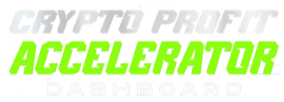The Solana ecosystem is expanding beyond software and DeFi into consumer hardware with the upcoming Play Solana Gen 1 (PSG1) handheld console. Scheduled to ship on October 6, 2025, the PSG1 is designed to be the first gaming device built natively for Web3: part portable console, part crypto wallet, and part distribution hub for Solana-based games.
By combining a secure hardware wallet, NFT integrations, and developer tools with the form factor of a modern handheld, Play Solana is betting that gamers are ready for blockchain-native experiences that go beyond speculation. However, with little clarity yet on its launch game library, the question remains: can PSG1 deliver genuine fun, or will it be seen as just another crypto novelty?
Key Takeaways
-
PSG1 is Solana’s first Web3-native gaming console, set to launch October 6, 2025.
-
It combines gaming-ready specs with blockchain features like a hardware wallet, fingerprint authentication, and NFT integration.
-
Play Solana is positioning the device as a distribution hub for Solana Web3 games, though the confirmed launch library is still unknown.
-
Solana’s earlier hardware efforts (Saga and Seeker phones) proved it can ship devices at scale, but critics point to limited app ecosystems.
-
PSG1 enters a growing Web3 hardware race, with rivals like Sui’s SuiPlay0X1 targeting the same niche.
Inside the PSG1
The PSG1 is powered by an octa-core ARM chip, featuring 8 GB of RAM and 128 GB of storage, running on Android. It sports a 3.92-inch OLED touchscreen, Wi-Fi 6.0, Bluetooth 5.4, and a 5,000 mAh battery.
Its defining features, however, are blockchain-driven: an embedded SvalGuard hardware wallet, fingerprint authentication, and integration with Jupiter Mobile for secure Solana-native transactions. This makes the PSG1 not just a console but also a crypto custody tool — a hybrid rarely seen in consumer electronics.

Games and Software Ecosystem
Play Solana is marketing the device as a distribution hub for Web3 games, with a Unity SDK already live for developers. The PSG1 is pitched as versatile, capable of hosting both retro-inspired pixel titles and modern, graphically advanced games, with dApps woven into gameplay.
Speculation has also circulated about potential emulation support for PSP, Dreamcast, PS2, and GameCube titles, though these remain unconfirmed by Play Solana.
To ensure players have content on day one, Play Solana is curating pre-installed games and inviting developers to apply for inclusion. Special editions such as the Pudgy Penguins PSG1 further suggest themed or exclusive game tie-ins.
The biggest uncertainty remains the launch lineup. Without compelling exclusives, PSG1 risks being remembered more for its blockchain features than for delivering fun gaming experiences.
NFTs, Editions, and Perks
NFTs are central to PSG1’s rollout strategy. The Player 1 NFT collection, capped at 2,000 holders, granted early preorder access and promises ongoing ecosystem perks. Special editions linked to Solana communities like MonkeDAO, BR1, and Pudgy Penguins connect the console directly to existing fanbases and may come with exclusive content.
Early preorder campaigns were also bundled with airdrops such as $GIGA tokens, blending financial incentives with hardware adoption. This model appeals strongly to Solana’s crypto-native audience, though whether mainstream gamers will care about NFTs and token perks remains an open question.
Solana’s Hardware Track Record
The PSG1 builds on Solana’s prior hardware experiments. The Saga smartphone, launched in 2023 at $599, sold modestly at first, but surged in value when each phone came with a BONK memecoin airdrop, pushing resale prices as high as $5,000.
In 2025, Solana Mobile released the Seeker, which secured 150,000 preorders across more than 50 countries, generating around $67.5 million in revenue. Early reviews praised its Seed Vault hardware wallet as a standout feature but noted average performance and limited app availability.
Competition in Web3 Hardware
Solana will not be alone in the handheld space. Mysten Labs, creator of the Sui blockchain, announced the SuiPlay0X1 in 2024, with release expected this year. Together, PSG1 and SuiPlay0X1 represent the start of what could become a Web3 console war — but one fought over ecosystems, NFTs, and token incentives rather than discs and cartridges.
Outlook: Innovation or Distraction?
The PSG1 blends console gaming with crypto-native tools in a way no mainstream handheld has attempted. It is innovative, experimental, and tightly aligned with Solana’s identity as a fast-moving blockchain.
Yet the big test is still ahead. Without a strong library of compelling titles, the device could struggle to win over gamers who view NFTs, token incentives, or crypto wallets as disruptive rather than additive to their experience.
If Play Solana delivers real fun to match the innovation, the PSG1 could redefine how gaming and Web3 interact. If not, it risks becoming another reminder that novelty alone does not guarantee adoption.
We will find out in October 2025, when the first PSG1 units finally ship and Solana’s latest hardware gamble faces its audience.

